
Let's meet the personal pronouns!
- Subject:
- English Language Arts
- Language, Grammar and Vocabulary
- Material Type:
- Lesson
- Provider:
- Khan Academy
- Provider Set:
- Khan Academy
- Author:
- David Rheinstrom
- Date Added:
- 07/29/2021

Let's meet the personal pronouns!
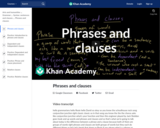
A phrase is any collection of words that behaves like a part of speech, like a noun phrase (“my brother Stu”), an adjectival phrase (“in a different shade of blue”), or an adverbial phrase (“with elegance and tact”). A clause is any noun phrase plus a verb; they can be sentences, but they don’t always have to be. You’ll see!
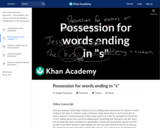
Do words that end in "s" still need _'s_ to show possession? David and Paige explain!
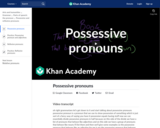
Possessive pronouns describe what things belong to which people, like "her shoe" or "the book is mine." Possessive pronouns can be adjectives, like "his bicycle," or they can stand in for nouns, like "the seats are theirs." Neither of these forms should have apostrophes to show possession -- so it's ours (not our's) and yours (not your's).
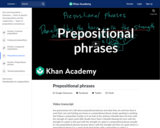
Prepositional phrases are word chunks that begin with a preposition.
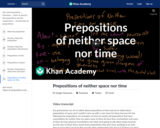
Some prepositions describe relationships between people or things. These prepositions don’t include information about time or space.
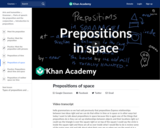
Some prepositions help describe relationships between objects and their locations in space. David explains how!
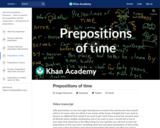
Some prepositions help describe moments in time. Learn more and enhance your powers of time wizardry!
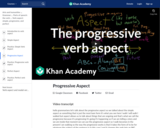
We use the progressive aspect to express that a verb action is ongoing, as in "I am eating.".

An antecedent is “the thing that came before”. When you use a pronoun, it’s standing in for a word you used previously—that’s the antecedent. Join us as we demonstrate how to make sure that your pronouns and antecedents match up with one another: that’s called agreement!

The difference between something being singular or plural is what we call 'grammatical number' in English. Here's how that idea applies to pronouns!
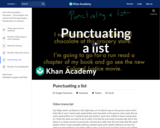
Learn how to use commas to punctuate a written list of people, things, actions, or events.
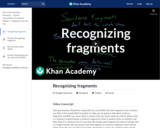
A sentence fragment is a chunk of language that hasn’t made it all the way to being a working sentence; it might be missing a verb, or there might not be a subject. Learn how to turn a fragment into a sentence in this video!
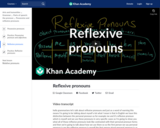
Reflexive pronouns, like "myself" or "herself," show when the object of a sentence is also the subject of a sentence. Examples include "I saw myself in the mirror" or "We bought ourselves a snack at the farmer's market." .
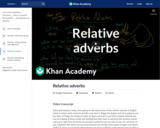
Relative adverbs connect chunks of sentences together. Find out how that works!
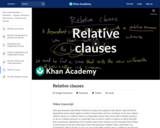
A relative pronoun is a word like “that” or “which” or “who”, so a relative clause is a clause that begins with a relative pronoun. In the sentence “The dragon who breathed blue fire has retired,” “who breathed blue fire” is a relative clause. Learn more about these constructions by watching the video!

We use the relative pronouns to connect clauses together, like "the man *who sold the world* is coming over for dinner." David, KA's Grammar Fellow, explains.
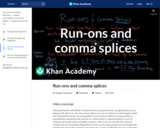
A run-on sentence doesn’t separate any of its independent clauses with the punctuation that it needs, and a comma splice incorrectly separates two independent clauses with a comma, instead of a comma-and-coordinating-conjunction.
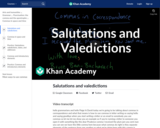
David and Paige, KA’s resident grammarians, talk about how to address and sign off on letters using commas!
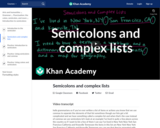
We use semicolons to punctuate a complex list, which is when list items contain commas. For example, “I visited Paris, France; Paris, Texas; and Paris, Illinois.” Paige explains.